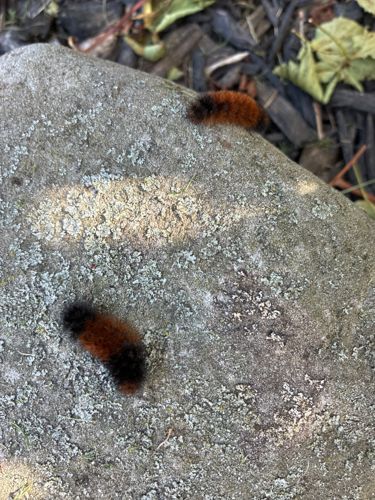Woolly Bear Caterpillar (larva of Isabella Tiger Moth)
Scientific Name: Pyrrharctia isabella
Order & Family: Lepidoptera, Erebidae (formerly Arctiidae)
Size: Caterpillar: 3-5 cm (1.2-2 inches) long. Adult moth: 4.5-6.5 cm (1.8-2.6 inches) wingspan.

Natural Habitat
Widely distributed across North America, found in gardens, fields, woodlands, and urban areas. They often overwinter under leaf litter, logs, or rocks.
Diet & Feeding
The caterpillars are generalist herbivores, feeding on a wide variety of broadleaf plants, including dandelions, asters, sunflowers, clovers, grasses, and various garden plants. Adult moths do not feed.
Behavior Patterns
Woolly Bear Caterpillars are known for their distinctive bristly appearance with bands of black and reddish-brown hairs. They are often seen in autumn, actively searching for overwintering sites. They overwinter as caterpillars, freezing solid and thawing in the spring to complete their development into moths. When disturbed, they curl into a tight ball as a defense mechanism, playing dead. The adult Isabella Tiger Moths are nocturnal.
Risks & Benefits
Risks: The hairs of the caterpillar can cause mild skin irritation or allergic reactions in some sensitive individuals if handled. However, they are not venomous or toxic. Benefits: They are a food source for birds and other insectivores. Their presence can indicate a healthy local ecosystem. They are widely recognized and often associated with folklore regarding winter weather predictions (though this is not scientifically proven).
Identified on: 9/10/2025